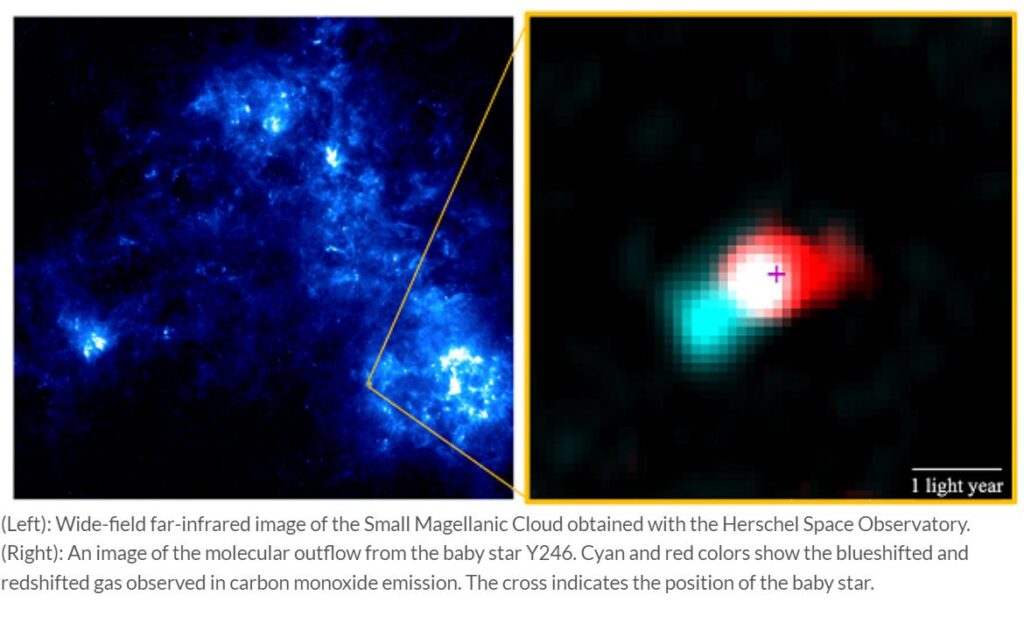
Researchers at Osaka Metropolitan University have observed “baby stars” in the Small Magellanic Cloud, having an environment similar to the early universe. Toward one of the baby stars, they found molecular outflow, which has similar properties to those seen in the Milky Way galaxy, giving a new perspective on the birth of stars.
The heavy elements in interstellar matter significantly impact the mechanism of star formation. In the early universe, the abundance of heavy elements was lower than in the present universe because there was not enough time for nucleosynthesis to produce heavy elements in stars. It has not been well understood how star formation in such an environment differs from present-day star formation.
An international team led by Professor Toshikazu Onishi, Osaka...
Read More









Recent Comments